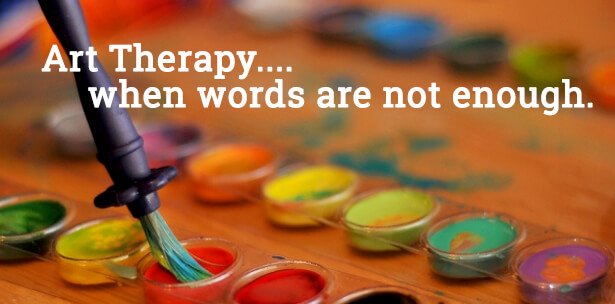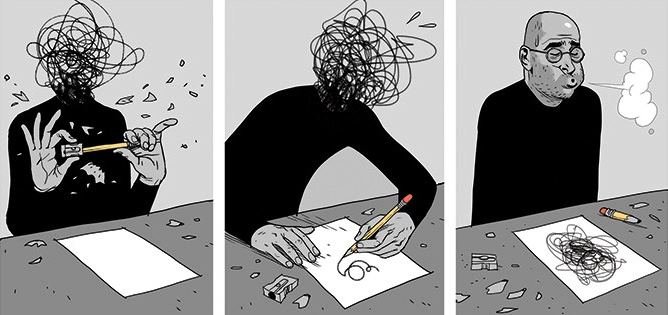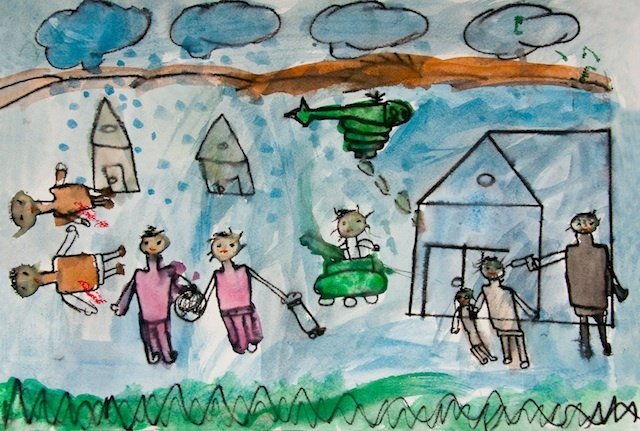When using visual arts materials to not only identify, but also to treat emotional trauma and mental disorders, it can be called Art Therapy. By creating images in drawings, paintings, sculptures and photographs, those who have some underlying issues can provide information about suppressed feelings and buried memories that they cannot express with words.

This approach is also an important aspect of rehabilitation programmes for people who are recovering form a stroke or an injury affecting hand function. It can help disabled people to improve their self-image and depressed or elderly patients to expand their range of expression. Children of any ages love expressing themselves with art and a trained teacher would know what to look for in the case of emotional disturbances.
When is it used
Art therapy is used when people who cannot or will not employ words to achieve the personal insight that is a cornerstone of traditional psychotherapy. By surmounting language barriers, this therapy can be especially effective with disturbed children and patients who speak a different language from the therapist. Is is also helpful in rehabilitating hand/motor skills following a stroke or injury and assessing the progress of such a person by comparing an early attempt at a self-portrait with a similar attempt after physiotherapy.

How it works
By providing a patient with a nonverbal means of expressing repressed thoughts and feelings, art therapy can help ease guilt and anger. Sexually abused children often render images whose meaning can eventually be discussed. Through drawings and paintings, a schizophrenic patient may offer the therapist a view into a disordered mind, thus providing some clues for how treatment might proceed.
Art therapy can also enable mentally ill deaf adults to describe early conflicts with family members and to alleviate symptoms of aggression, hostility and depression. Physically handicapped children, neglected elderly persons, alcoholics and prison inmates all can be helped to build self-esteem through sculpture, painting or photography, especially when they see their work exhibited for other people's appreciation.
What to expect
Through supportive discussions with an art therapist, patients become aware of the messages conveyed in their drawings, paintings or sculptures. When previously unacknowledged frustration, rage or confusion has been brought to light, that person can be helped to take positive steps for dealing with it. Practiced in a family setting, art therapy can resolve interpersonal problems.

Where does it come from?
The term art therapy was first used in the 1940's to describe the work of psychiatrists and psychologists who were finding that artistic expression provided important insight into the feelings of disturbed children. Independent practitioners eventually established the American Art Therapy Association, which issued guidelines for the first formal training programme in 1967.
Resources:
How art therapy can heal
Art therapy in humanistic psychiatry
What is art therapy?
Drawing on dreams

I had heard about the representation of the human body, as a therapy of psychological evaluation. Of this that you present us today, I did not know anything about it, it seems very accurate and I think that you can get more information about the patient's state of mind treaty.
Thanks @nayibe. I find anything to do with psychology very interesting. It's amazing how the mind works and how trained professionals are able to get in there and find underlying issues.
I just heard and read that there is such thing as art therapy. It looks pretty good as an alternative treatment.
Thank you for your information.
If you can know, Who is capable of doing this art therapy? Whether their education graduates from medicine or psychology?
Who is the patient suitable for this kind of treatment? And What diseases can be treated this way?
Hi @regina80 and thanks for reading. To answer your question...practitioners such as psychiatrists, psychologists and psychiatric social workers are the ones who normally do art therapy with patients with all sorts of problems. It can be children who have been abused or neglected, teenagers or adults suffering from depression, stroke patients, elderly patients who are a little disturbed. I guess art therapy can be used to treat or just to get some patients to "talk" about their feelings through art. Especially with children! If you look at the last picture in my post, you will see that sometimes children draw pictures about things they think about but they don't necessarily talk about it. It can be something that has happened to them or what they see at home. This is a way for teachers and parents to know that there is a mental problem that has to be treated.
Thank you very much for your explanation. You really care.
I am also a child education practitioner, but not a child with special needs. But there is a friend of mine whose job is to handle special needs children, such as children with mental weakness.
for your explanation of this, I can give advice for him hope this can help accelerate in terms of the achievement of knowledge of the children.
I am very glad you responded to my writing. I will follow your next post.
May you always be granted the ease by God.
I have one of those adult colouring books and it is so amazing how sitting down and colouring in relaxes me, even as an adult! There really is something therapeutic about practising creativity.
Hi @sweetpea. I have one of those too. Pity I don't get to use it as often as I should. Very relaxing indeed!